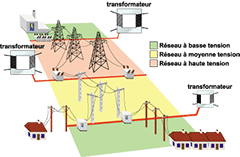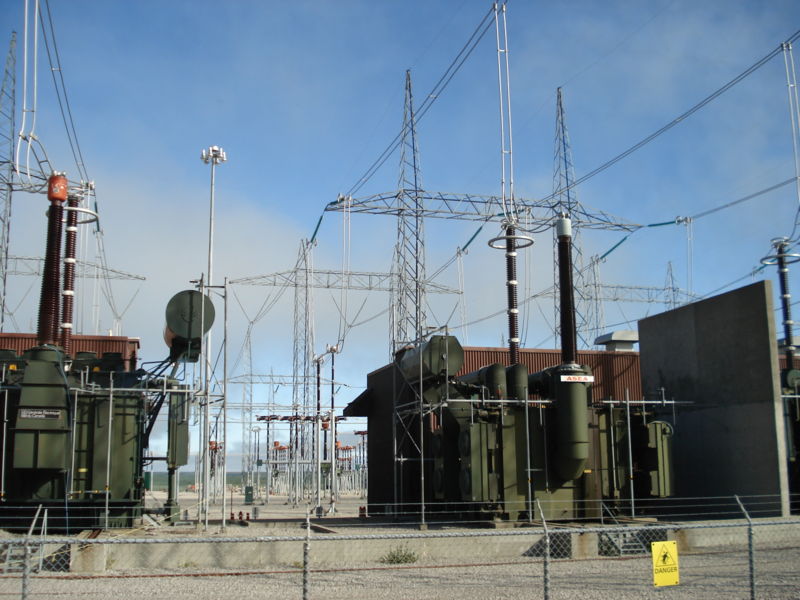Home > How It Works > Transportation > From Generating Station to Switchyard
From Generating Station to Switchyard
Before electricity is consumed, three steps are followed: production, transmission and distribution. In the first step, the generator produces the electricity from a primary energy source. The transmission step consists of moving the electricity produced at generating stations to consumption locations. Thereafter, the electricity must be distributed to each house, factory or business.
Electricity generated by the generators flows to transformers that step up the voltage in preparation for travel over long distances. The most powerful generating stations in Quebec are, for the most part, located in the James Bay and Côte-Nord areas, more than one thousand kilometres from major consumption centres.
Electricity travels more easily at high voltages because there are fewer energy losses. For example, the 13 800 volt current generated by the generators at the Robert-Bourassa location is stepped up to 735 000 volts by gigantic power transformers. On November 29, 1965 Hydro-Québec commissioned the first 735 000-volt power line in the world. This daringly innovative technology for the era was proposed by engineer Jean-Jacques Archambault of Hydro-Québec. The technology continues to be used today to move production from remote locations in the Côte-Nord and James Bay area to the distribution network that supplies cites in Quebec.
Given the vast expanse of territory in Quebec, electrical energy requires an imposing network of high voltage power lines installed over several thousand kilometres. The transportation network is made up of towers, lines, stations that step voltage up or down and an interconnection. Towers are the most visible pieces of equipment in the electricity transmission chain. Towers support the high-voltage conductors of overhead power lines.
The high-voltage conductors on the towers are made of aluminum, a lightweight material and very good conductor offering a better price-quality ratio than other metals such as silver, gold or copper. Each conductor is stranded with wires twisted together around a steel core that gives the conductor its required strength.







